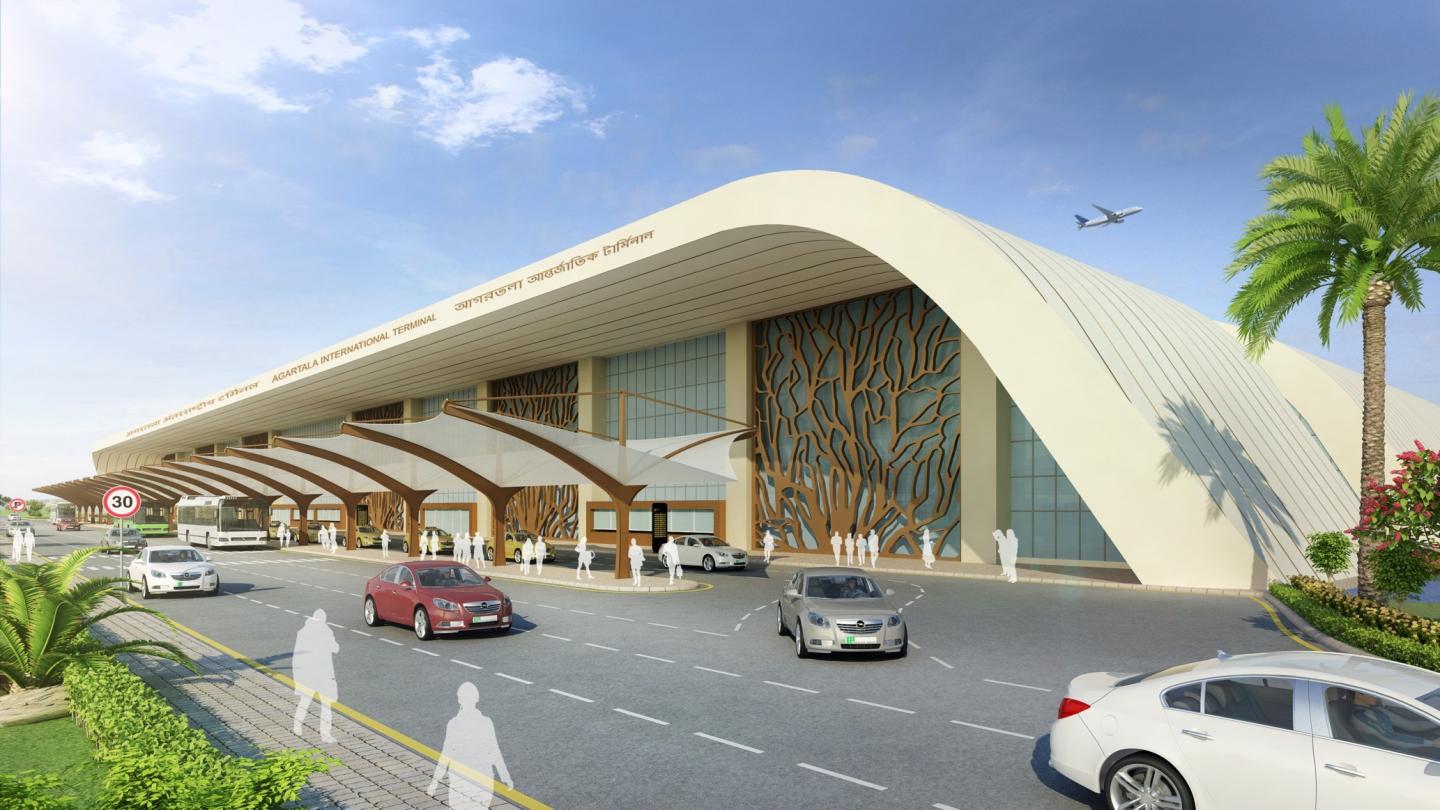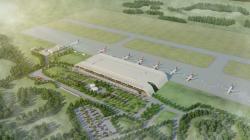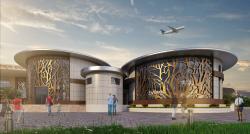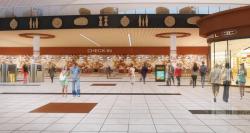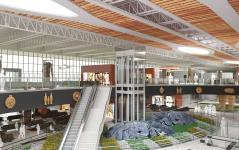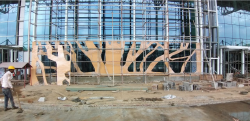A Simplistic Design with Local Art
With the current scenario of rapid growth and ease in mobility, travel comfort and infrastructure are also expanding parallelly. Thus coalescence of form and functionality through architectural interventions is the key to transit architecture.
The new modern Integrated Terminal Building at Agartala Airport is designed keeping local architecture, art, and heritage in mind. The design manifests the sweeping roof profile that envelops the entire terminal spanning across 30,000 Sqm and procures its form from the hilly terrain of the state of Tripura. The intent was on creating an overall free-flowing terminal which is simple and easy to construct, while being a perfect mix of ecological infrastructure, art, and building technology, and also using advanced Intelligent Building Management Systems so as to optimize the consumption of energy.
The planning approach for the terminal is based on airport procedure and passenger flow, integrated with landscaping and retail to increase user experience and at the same time ease the movement in the building. As we move towards major growth in infrastructure development throughout the country, it is essential to understand that designing in context with the local art and architecture in mind is foremost to give the building an identity and character with which the common masses can relate.
Thus, it was kept in mind that the Agartala Airport derives its vocabulary from the local environment and cultural context. Bamboo is used as a widespread local material in the state for construction whereas tribal artwork and crafts promote cultural tourism. The usage of these art and craftwork is displayed all over the terminal as sculptures, jaali work, furniture, and murals. Inspired from extensive green forest covers, the bamboo plantations are combined with local tribal stone sculptures of the Unakoti hills and the bamboo handicrafts made in Agartala. Bamboo stem sculptures are also erected in the waiting area inside the terminal building thus enhancing the interior landscape. The design of the airport reflects the philosophy that terminals as gateways play a major role in welcoming the passenger and should, therefore, be treated as a living organism and not a mass of brick and concrete.
Keeping the fluidity of the façade, the plan has also been incorporated with landscape areas inside the building which provide relief space for the passengers. The free-flowing form has been further accentuated at arrival and departure areas, with courtyards on either end of the terminal, and green cover and open spaces allowing light to enter the terminal, lighting it from within with natural glare-free light. The design approach incorporates sustainability at its core with attention to reducing the role of artificial lighting systems and respecting the solar movement.
The whole design is progressed remarking the Benchmark Terminals T -3 at Delhi for design, selection of construction materials and terminal T -2 at Mumbai for general aesthetics, interiors, media plan, and artwork.
The local environment and cultural references, as well as the vernacular architecture of the region, is well depicted in a contemporary way to add grandeur to the architectural vocabulary of the airport. This project is perceived as a fusion of modern architecture with local art.
2019
0000
Jaalis is an eminent functional design feature, which can be seen in traditional households as well as in royal forts and palaces. It restricts excessive solar radiation and permits optimum daylight to increase internal efficiency. Along with their use, skylights have also been introduced in the design to maximize the natural daylight within the building.
Further, bamboo architecture is represented in the façade of the terminal building by way of a floral GRC Tree Jaali pattern depicting the forests and greens of the region, placed equidistant from each other. Depiction of local motifs in metal cladding helps in creating vibrancy, at the same time informing about the users about the art of the state.
The proposed terminal building mainly covers the ground floor with some upper areas, consisting of RCC and steel columns, beams and metal deck slab at mezzanine level. The form of the terminal is made with the structural support of steel columns covered by metal cladding. To support this cladding, Steel Portal frames and Steel Purlins are used to derive the desired form and make the structural framework. These portal frame trusses will allow for column-free large span public spaces. The regular structural scheme and repetition of the basic structural module result in maximum resourcefulness and also assist in limiting the overall depth of the structural envelope.
Creative Group, Prof. Charanjit Shah, Ar. Gurpreet Shah
